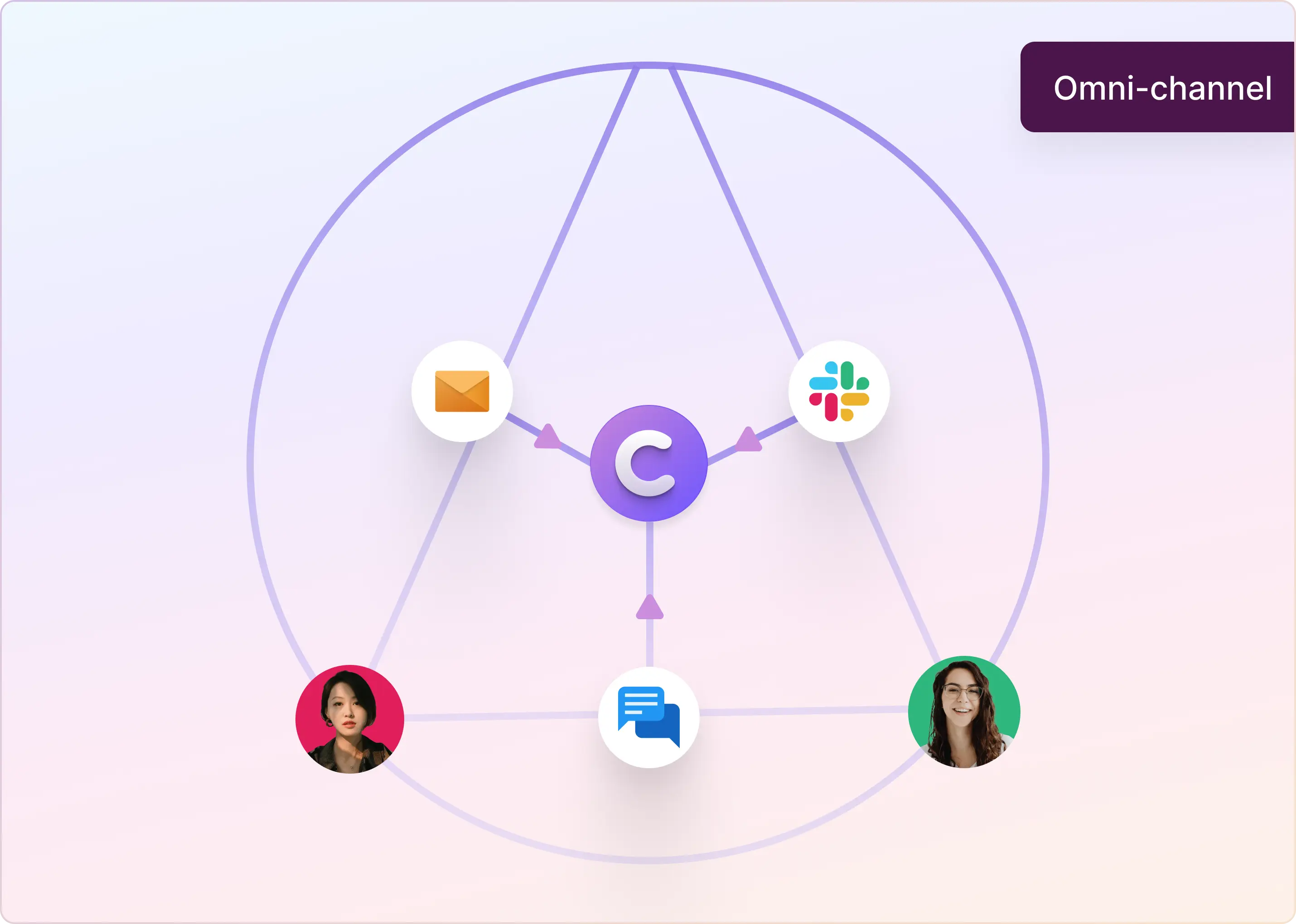The landscape of customer communication is witnessing a paradigm shift. As businesses transition to a Slack-first culture, the dynamics of customer engagement are evolving. In a recent episode of "Huddles by ClearFeed," we interacted with industry leaders from top Data and Cloud companies including Yotascale, Chronoshphere, and Bigeye to delve deeper into into the transformative role of Slack in customer success.
Let's dive in through some of the key highlights from this discussion.
Key Takeaways:
- Swift onboarding & Streamlined Support: Slack accelerates the onboarding process, offering immediate access to support and enhancing product adoption.
- Collaborative Synergy: A diverse array of professionals, from sales engineers to technical account managers, converge on customer Slack channels, ensuring a multifaceted and comprehensive support system.
- Setting expectations and meeting response SLAs: Even on dynamic platforms like Slack, organizations remain steadfast in their commitment to consistent SLAs, guaranteeing a top-tier customer experience without sacrificing quality.
- The shift from Traditional Channels: A notable migration from traditional channels like emails and Zoom meetings to Slack, emphasizing real-time collaboration and decision-making.
- Challenges in Adoption: While Slack offers a myriad of benefits, its integration is not without hurdles, particularly for customer segments less acquainted with the platform.
1. Streamlining Onboarding and Technical Support with Slack
In the evolving digital landscape, ensuring a smooth onboarding experience is crucial to building lasting customer relationships. Conversational support platforms like Slack and MS Teams have emerged as an indispensable tool.
Barrett Summerlin, Chief of Staff and Business Operations at Bigeye, shares this transformation at her organization.
"There's a notable increase in how quickly people are able to get up and running because they have that quick access to someone that can help them. From an adoption perspective, it felt really productive. You're working into the flow that already exists with people, so they're actually ingesting the information you're giving them, versus maybe an email where they're just clicking it and moving on."
With the immediacy and accessibility Slack offers, customer-facing teams can swiftly address queries, ensuring every new user feels valued, supported, and equipped with the right information from day one.
“We noticed a significant increase in the speed of onboarding. Slack provided quick access to support, which facilitated better product adoption.”, Barret added.
2. Importance of Cross-Functional Collaboration
The team dynamics and operational models have also evolved significantly over the years. Organizations now have diverse roles like sales engineers, solution architects, and technical account managers that are part of the customer Slack channels, ensuring swift responses and streamlined support.
Joby Babu, Head of Customer Success at Chronosphere, emphasized the dynamic nature of Slack-based customer interactions and the importance of cross-team collaboration.
“Customers engage in diverse discussions on Slack, depending on their stage in the journey. Topics range from team coordination to technical queries, with well-defined internal guides directing the conversation flow. During pilots, it's mostly about understanding the platform that is directed towards Sales Engineers. As onboarding progresses, the technical account manager becomes the point of contact. So the entire customer pod is active on Slack”
3. SLA Management in Slack
Service Level Agreements (SLAs) remain as crucial on Slack as they are on traditional channels. Jeff Harris, Director of Strategy and Operations at Yotascale, highlighted the balance between immediacy and quality while managing SLAs on Slack.
"Whether it's Slack, Email, or another support channel, the focus is always on delivering a seamless customer experience. Slack might offer immediacy, but our commitment to SLAs ensures that immediacy doesn't compromise quality." Notifications are set up to alert teams of potential SLA breaches, ensuring timely responses and maintaining service quality.”
Echoing this sentiment, Barrett added, “We maintain standard SLAs across all channels, ensuring a consistent experience for our customers. This means even on Slack, where interactions are real-time, we adhere to the same response and resolution standards.”
4. Embracing a Slack-First Culture: The Shift from Traditional Channels
Businesses are experiencing a notable shift away from traditional communication channels. Emails and scheduled meetings, once the mainstay of customer communication, are now being complemented, if not entirely replaced, by real-time messaging platforms like Slack that offer immediacy, flexibility, and a more collaborative environment.
Joby observed this transformation at Chronosphere, "We're seeing a notable shift away from traditional channels. Slack has become the primary mode of communication, fostering real-time collaboration and decision-making."
This transformation is especially evident during the sales cycle. Jeff Harris elaborated, “Previously, our sales process was dominated by emails and Zoom meetings for initial setups and organization. But with the advent of Slack channels, we've pivoted to more asynchronous communication. This shift ensures that all stakeholders stay updated on developments in real-time.”
5. Challenges in Adoption
While Slack has revolutionized the way businesses communicate with their customers, its adoption is not without its challenges. One of the challenges that Jeff pointed out is the varying levels of familiarity and comfort with the platform across different customer segments.
“One of the challenges we've run into is that not everybody uses Slack. Some customers are not yet adopting shared channels. As a result, while we have excellent interaction and communication with one set of customers, there's another set with whom we struggle to maintain that same type of relationship."
On the other hand, Joby emphasized the importance of setting the right expectations from the outset, especially as companies grow and engage with more customers.
“Setting the expectations right at the beginning of customer engagement is crucial. It's essential to understand that while Slack facilitates instant messaging, there can be occasions where responses might be delayed. However, if it's something important, customers can be assured of an immediate response from the support team."
Wrapping Up
The panel discussion offered a holistic view of Slack's growing significance in customer engagement and communication. As businesses continue to adapt and evolve, conversational support platforms are becoming integral to delivering exceptional customer experiences by offering a direct line of communication, facilitating faster onboarding, and providing a platform for immediate feedback and support.
Ready to enhance your customer support experience? Join our community Slack channel, or book a free demo with us.




















